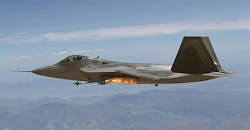Navy invests half-billion dollars in AIM-9X air-to-air missile procurement and upgrades
Officials of the Naval Air Systems Command at Patuxent River Naval Air Station, Md., announced contracts worth $491.1 million Friday to the Raytheon Co. Missile Systems segment in Tucson, Ariz., for major projects to buy and improve the AIM-9X missile.
Raytheon on Friday won a $264.8 million Navy contract for AIM-9X improvements to provide additional capability and resolve obsolescence issues for the Navy, Air Force, and the governments of Korea, Singapore, Malaysia, Belgium, Netherlands, and Turkey.
Also on Friday, Raytheon won a $227 million contract modification to build 447 new AIM-9X Block II Lot 15 missiles -- 102 for the U.S. Navy; 243 for the U.S. Air Force; nine for the government of Japan; 76 for the government of Korea; 12 for Romania; and five for Israel.
Related: Navy asks Raytheon to upgrade electronic subsystems in AIM-9X Block II air-to-air missile
The AIM-9X is a relatively short-range infrared heat-seeking missile that equips most jet fighters, fighter-bombers, and other offensive combat aircraft in the U.S. arsenal, and is used to shoot down enemy aircraft close by. The AIM-9X works by homing in on an enemy aircraft's hot engine exhaust. Variants of the AIM-9 Sidewinder have been deployed since the 1950s.
The AIM-9X is among the latest versions of the AIM-9 missile family. It entered service in 2003 on the Navy F/A-18C Hornet fighter-bomber and on the U.S. Air Force F-15C jet fighter. It has an imaging infrared focal plane array seeker with 90-degree off-boresight capability for accuracy.
The missile is compatible helmet-mounted displays such as the U.S. Joint Helmet Mounted Cueing System, and features 3-D thrust-vectoring control for increased turn capability. The AIM-9X also includes an internal cooling system.
The latest version of the AIM-9X is called the AIM-9X Block II. This newest version has lock-on after launch capability for use with the F-35 Lightning II joint strike fighter and the F-22 Raptor advanced tactical fighter.
story continues below
The missile-improvement contract is to install new components and software into the AIM-9X Lot 17 and Lot 19 production programs, and includes development and testing for AIM-9X Block II hardware and software.
On the two contracts Raytheon will do the work in Tucson, Ariz.; Andover, Mass.; Baltimore; Valencia, Calif.; Midland, Ontario; Rocket Center, W. Va.; Vancouver, Wash.; Goleta, Calif. (2.86 percent); Cheshire, Conn.; Heilbronn, Germany; Simsbury, Conn. ; San Jose, Calif.; Anniston, Ala.; Cincinnati; Maniago, Italy ; Chatsworth, Calif.; San Diego; Montgomery, Ala.; Orlando, Fla.; Newbury Park, Calif.; El Segundo, Calif.; Claremont, Calif.; Joplin, Mo.; Lombard, Ill.; El Cajon, Calif.; and other locations.
The missile-improvement contract will be finished by September 2020, and the missile-production contract will be finished by December 2017. For more information contact Raytheon Missile Systems online at www.raytheon.com, or Naval Air Systems Command at www.navair.navy.mil.

